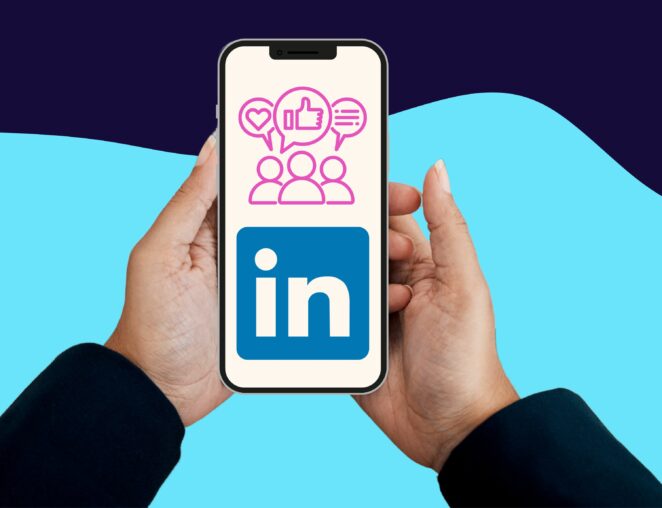What you’ll learn
Ever try to explain dial-up internet to Gen Zers? Or SEO to a Baby Boomer?
If you have, then you know there’s a stark contrast in how different generations perceive the world. When it comes to your business, your messaging should feel inclusive to every age group in your customer base. You can do this with generational marketing.
The best way to reach your target audience? With a well-planned generational marketing strategy.
81% of consumers want brands to get more personal with their communications. This means it’s time to figure out who’s buying what you’re selling and roll out marketing campaigns that speak directly to them.
Generic, one-size-fits-all messaging? That’s so not Lyon Content’s style, and it shouldn’t be yours either. Generational marketing is the key to unlocking your ideal audience.
In this article, we’re dishing all the deets for marketing to different generations — from who they are and which marketing strategies they favor to what doesn’t work and more.

What is Generational Marketing?
Generational marketing is a strategic approach in which you segment and target audiences based on their age groups. By marketing to different generations, you tap into the values and experiences that resonate with them most. The goal? To build a stronger connection and entice them to invest in your brand.
There are currently six living generations in America. However, there are only four that account for most purchase decisions in today’s market: Baby Boomers, Gen X, Millennials, and Gen Z.
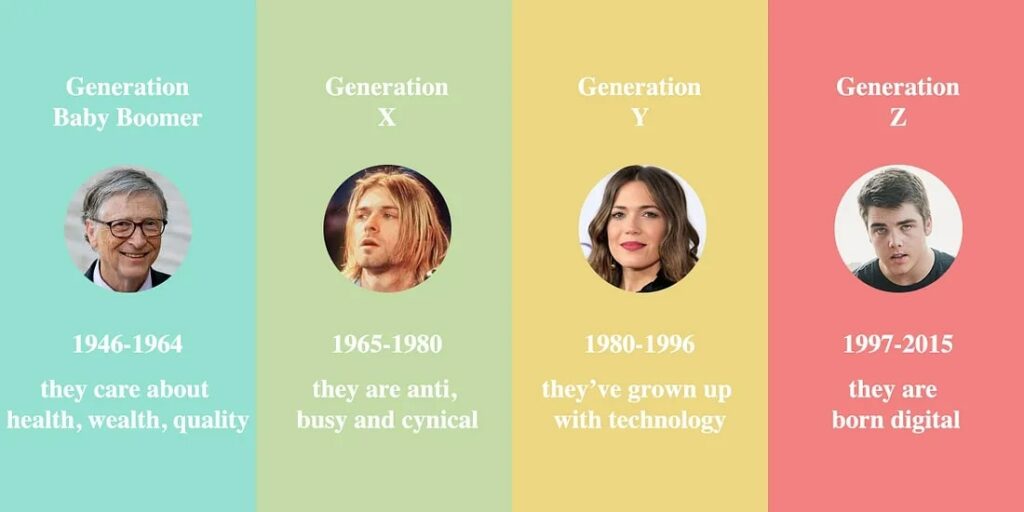
Each of these generations has unique beliefs, interests, and collective experiences that shape how they think and behave. There are also cultural and socioeconomic factors, and (most notably) tech advancements and economic shifts.
Defining moments also impact how each generation responds to different messaging. These can be big or small, cultural, political, or even digital — think 9/11, Nirvana’s grunge-rock zenith, or the imminent AI phenomenon.
All of this plays into how your audience receives your marketing. When you understand these nuances, you’re able to use generational marketing to craft messages that strike a chord and connect with your ideal customer.
How to Market to Different Generations
First up: a generation that takes the lead in purchasing power.
Baby Boomers ⭐ Born: 1946-1964
After World War II ended, birth rates across the world spiked and thus came to be the Baby Boomer generation. Up until millennials surpassed them in 2020, Baby Boomers were the largest generational group in American history.
Thanks to their significant numbers and the sustained economic growth of the U.S. during their working years, this generation continues to boast substantial economic (and political) clout. Oh, and did we mention they’ve racked up years of disposable income?
While this age group didn’t grow up with modern technology, they’ve learned to embrace social media (like Facebook), mobile devices, and online shopping in their later years. They love a good deal and are fiercely loyal to their favorite brands.
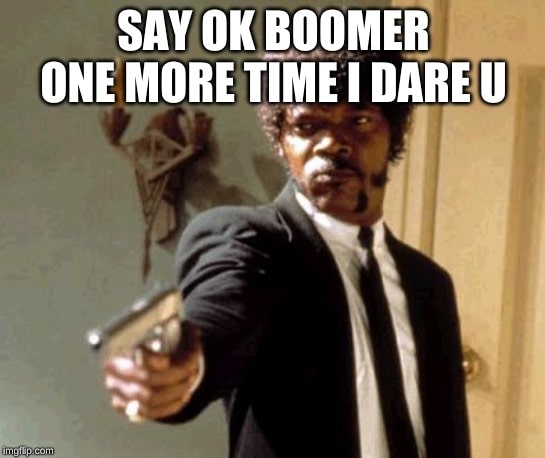
Tips for Marketing to Baby Boomers
Often shown at odds, Baby Boomers and Millennials overlap in quite a few ways. However, within those commonalities, subtle differences dictate how you should approach them.
For instance, in ecommerce marketing to boomers, millennials prefer shopping from mobile devices, while Boomers tend to use their computers. This might be because this generation likes to take their time and research before committing to a purchase.
Here are some generational marketing tips for targeting Baby Boomers:
Baby Boomers respond best to:
- Traditional marketing (TV and radio ads, print media, direct mail)
- Email newsletters
- Clear, concise language
- Helpful, value-based messaging
- Facebook over other social media networks
- Video formats that explain concepts in detail
- Digital accessibility (large fonts and buttons, sharp contrast, clear links, etc.)
- Email and phone customer service
- Face-to-face interactions
They respond least to:
- Slang
- “Old” or “elderly” language
- Chatbots and AI assistants
- Aggressive online advertising (pop-ups, clickbait, spam)
- Newer social media platforms (like Threads or Lemon8)
- Influencer marketing
- Fast-paced, flashy video content
Example of Baby Boomer generational marketing:
Take the Costco homepage — it’s straightforward and easy-to-navigate with clear categories and offers. It almost feels like you’re looking at a tangible catalog, doesn’t it?
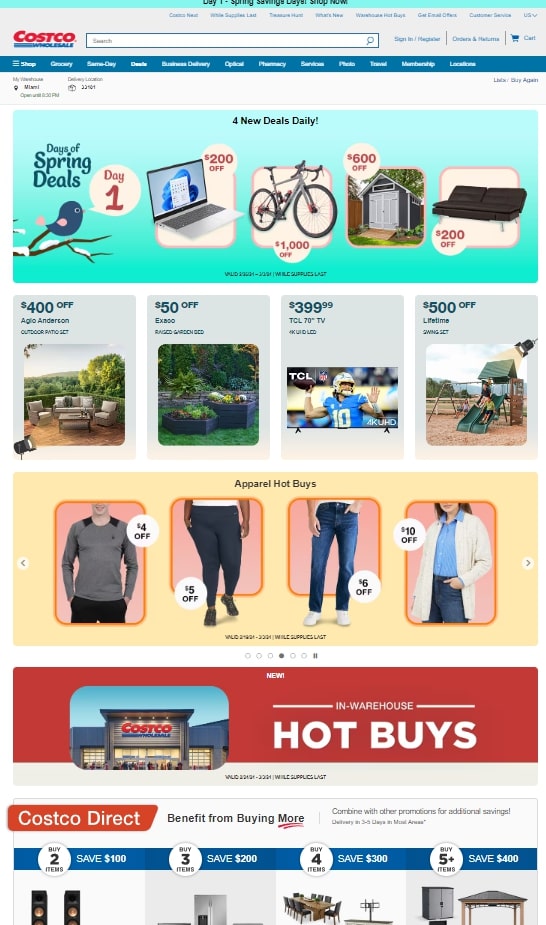
Gen Xers ⭐ Born: 1965-1979
Sandwiched between two of the largest generations is the smallest: Gen Xers. This group came up during the Great Recession, which might explain why they’re said to have the highest levels of financial trauma.
The years that defined Gen X saw various social and economic changes, like more women entering the workforce, the rise of birth control, and a shift in societal attitudes toward family size. All of this contributes to fewer babies being born. It’s also why Gen X is often dubbed the “Forgotten Generation” or “America’s middle child.”
Since divorce rates were high and both parents were off working, this generation consisted of many latchkey kids (meaning they were home alone a lot). This inspired a strong sense of independence, slightly more tech-savvy skills than Baby Boomers, and a bit of a cynical streak.
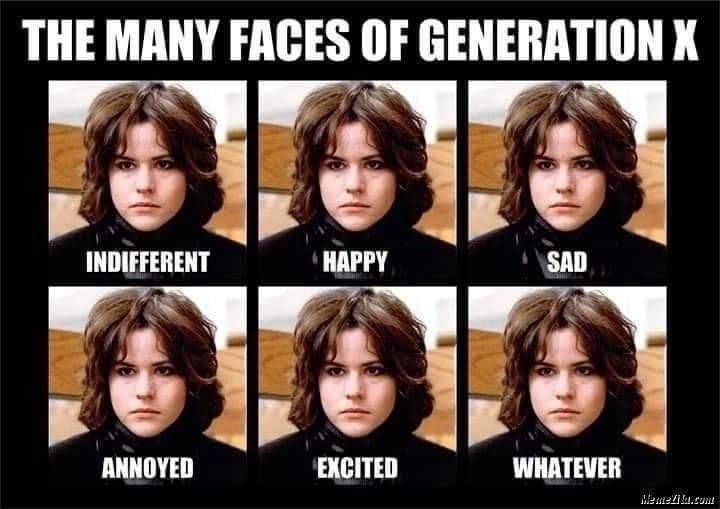
Tips for Marketing to Gen Xers
Your typical Gen Xer is big on family, financially responsible, and is fiercely self-reliant. As a result, Gen-X marketing should highlight authenticity, reliability, and practicality.
Don’t get it twisted, though — while they may be a bit more cautious with their finances, Gen Xers still hold a lot of spending power. They’re just hella picky, investing only in solutions that truly align with their balanced lifestyle.
You’ll also want to tap into their independent spirit and offer them practical options so they feel empowered to make an informed choice.
Gen Xers respond best to generational marketing that’s:
- Authentic, no B.S. messaging
- Clear, direct paths to purchasing
- Incentives and loyalty programs
- Nostalgia themes
- Word-of-mouth referrals
- A balance between traditional and digital ads
- Email and social media marketing (preferably Facebook)
They respond least to:
- Hype and unrealistic promises
- Overly aggressive sales tactics
- Influencer marketing
- Lack of safety net (no return policy, costly exchanges, etc.)
- “Smoke and mirrors” advertising (all fluff, little substance)
- Poor customer service
Example of Gen-X generational marketing:
Nintendo, a brand deeply ingrained in the childhoods of most Gen Xers, movingly combines a dose of nostalgia with their authentic brand messaging. How many Nintendo easter eggs can you spot in this Nintendo Switch ad?:
Millennials ⭐ Born: 1980-1995
Where my 90s kids at? Millennials, also known as Generation Y, grew up with the best of both worlds: a life that straddled pre-internet simplicity and the rapid rise of modern technology.
As the largest generation in history, their impact on the market and workplace culture is unprecedented. In fact, Millennials’ collective annual income is expected to exceed the trillions as they inherit the wealth of Baby Boomers. 🤯
Despite their purchasing power, this demographic’s got some quirks that marketers must navigate. For one, more than half would rather earn less money at a job they love than a higher salary elsewhere. They’re also big on social proof, often scouring the web for online reviews and recommendations before splurging.
All of this influences their spending habits. For example, Millennials value experiences over possessions. They love the convenience of online shopping, subscription services, and social media.
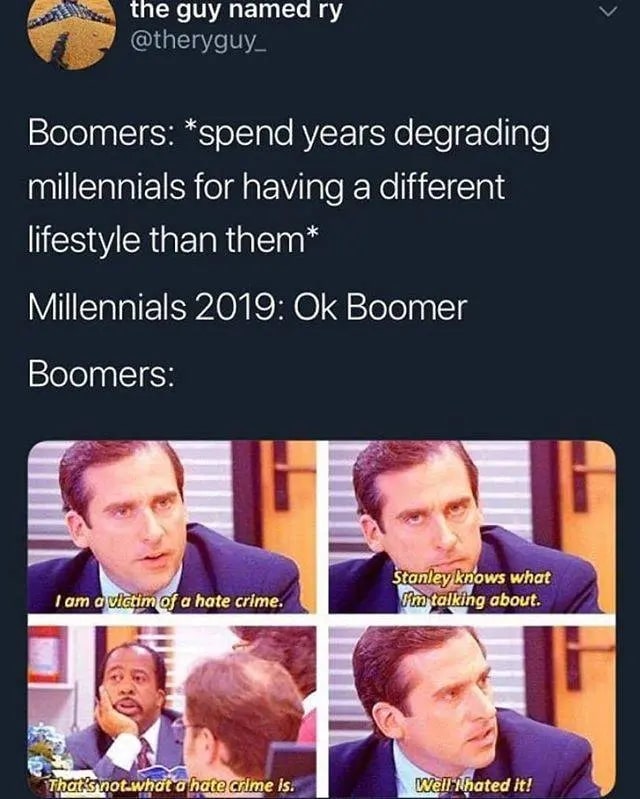
Tips for Millennial Generational Marketing
One thing about Millennials? We are a fickle demographic, we admit it.
That’s precisely why this age group gravitates towards services that offer flexibility and ease of use, like ride-share apps, subscription models, and even clothing rentals. It’s a generation that cares more about the use of products than the ownership itself.
To sell to these folks, you’ll have to craft a one-of-a-kind experience around your offerings. Then market that experience as your edge to your Millennial audience.
Millennials respond best to:
- Comfort and convenience
- Innovation and experiences
- Social proof (referrals, reviews, testimonials)
- Cross-channel marketing
- User-generated content (UGC)
- Rewards and loyalty programs
- Advocacy and social justice
- Flexibility and penalty-free commitments
They respond least to:
- Traditional, one-way marketing (except for radio)
- In-store purchases
- Salesly, generic advertising
- Celebrity endorsements
- Formal or corporate language
- Disconnected digital experiences
- Generic, impersonal messaging
- A lack of social or environmental conscience
Example of Millennial marketing:
One brand that’s nailing personalization, options, and tailored experiences? Audio streaming service, Spotify, uses AI to analyze user behavior and preferences. It also offers customized playlists and recommendations that suit each person’s tastes and moods. Just peep my personal Made for You page:
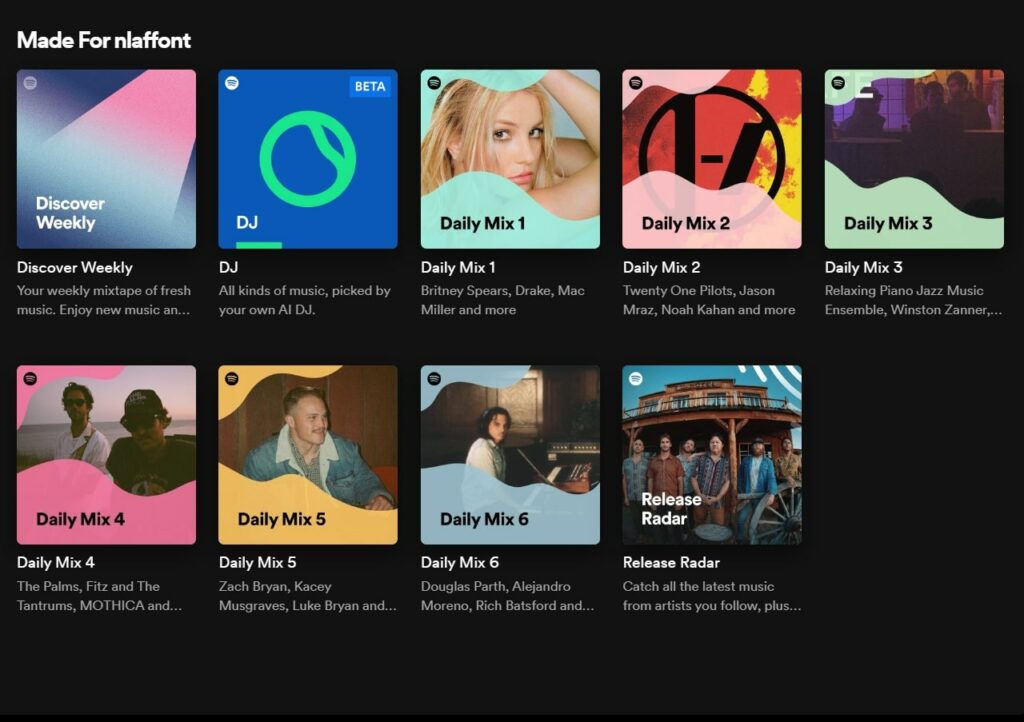
Gen Z ⭐ Born: 1996-2012
Gen Zers (or Zoomers) are every other generations’ tech-savvy, kid brothers and sisters. Despite being the youngest, this demographic already commands significant purchasing power ($450 billion, to be exact).
Unlike Millennials, who witnessed the intro of the digital revolution, Gen Z consumers were born smack dab into the middle of it. These are true digital natives who thrive on visual social media and interactive, visually appealing content.
But they’re not just about the ✨aesthetic✨ — this age group is big on financial stability because of the stresses they face with personal debt. When it comes to spending their money, they’re all about socially-minded products, entertainment, and inclusivity.
Tips for Gen-Z Marketing
Gen-Z audiences put their money where their mouth is values are.
They embrace brands as extensions of their identities, reflecting what they stand for and believe in. So, to connect with this digitally-obsessed generation, you need to clearly define your brand’s values and mission.
Your brand voice should feel genuine to the core. Then, you need to wrap it all up in a visually pleasing, aesthetic bow that carries consistently across all your marketing channels.
Building an audience of Gen-Zers to sing your products’ praises? Foster a sense of community around your brand, and you’ll steal their hearts. ♥️
Gen Zers respond best to:
- Social selling and advertising (influencer marketing and UGC)
- Bold, authentic, inclusive content
- Social media marketing (especially YouTube, Instagram, and TikTok)
- Visually-pleasing, short-form videos like Reels and TikToks
- Mobile-device friendly and interactive content
- Social proof (reviews, referrals, testimonials)
- Social and economic advocacy
They respond least to:
- Traditional marketing and print media
- Obvious selling
- Loyalty programs
- One-size-fits-all messaging
- Non-interactive, static content
- Long-form videos
- Lack of diversity and inclusivity
- Content that feels disconnected from their digital-first lifestyle
Example of Gen Z generational marketing:
Bold, aesthetic, and to-the-point messaging? This Behr Paint TikTok campaign is checking all of Gen Z’s advertising boxes:

Bridge the Generational Divide with Lyon Content
Nailing your audience’s focus? It really is an art form.
With generational marketing, you recognize the diversity of Boomers, Gen X, Millennials, or Gen Z, and make those differences the superpower of your brand.
Ready to turn these insights into action and craft a generational marketing strategy that attracts the masses?

04/18/2024
Natalie is a beauty and lifestyle writer at Lyon Content, born and raised in sunny Miami, Florida. She’s passionate about crafting personality-driven copy that helps brands build a ride-or-die following with their audiences! Like a true Cuban, she runs on XL cafe-con-leches and loves horror movies, houseplants, exploring new places, and snuggling up with her SO and fur babies.





